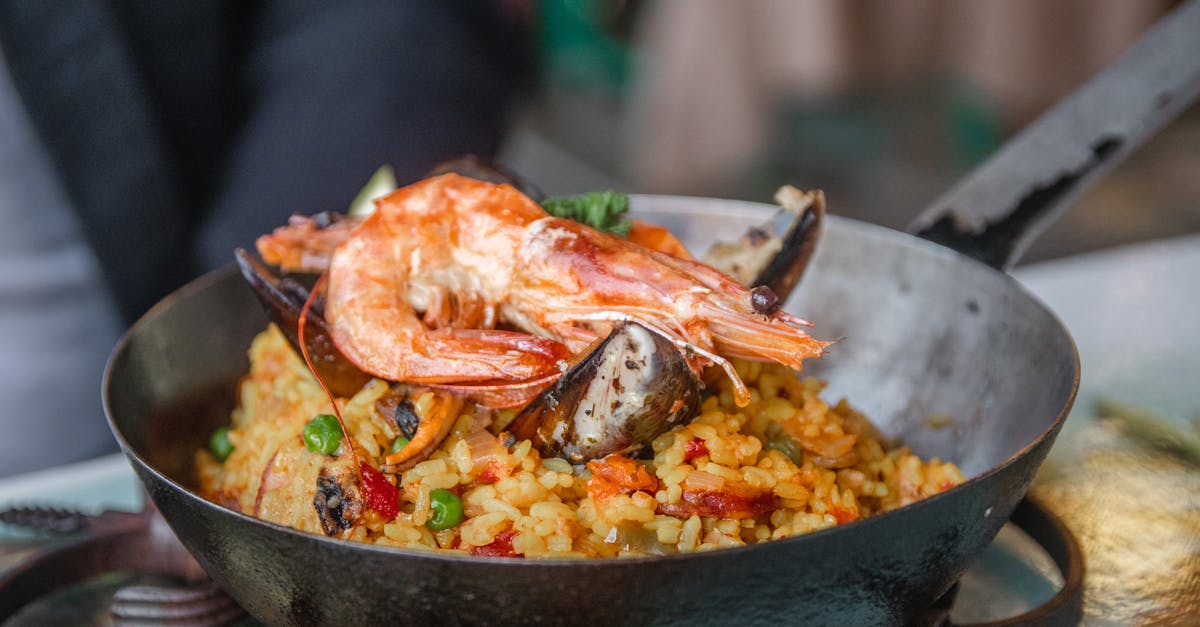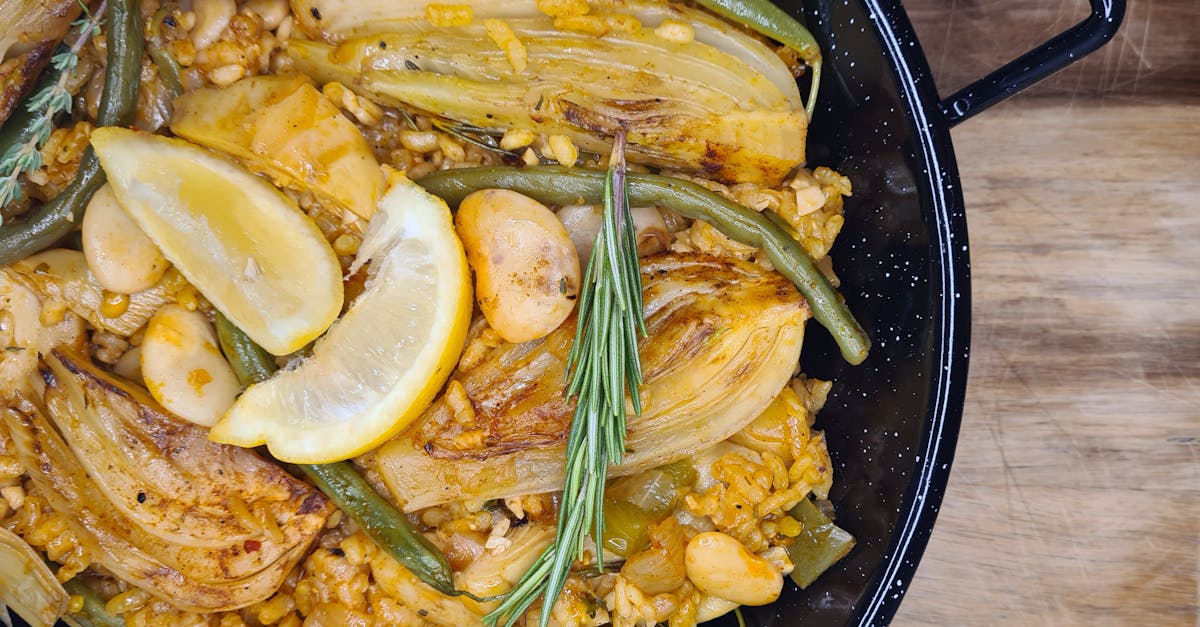Ensuring Authenticity of Spanish Ingredients
December 25, 2024

When it comes to Spanish cuisine, authenticity is paramount. From paella to chorizo, the unique flavors and ingredients of Spanish dishes are what make them so enticing to food enthusiasts around the world. However, ensuring the authenticity of Spanish ingredients can sometimes be a challenge, especially with the global market and the rise of counterfeit products.
One of the key factors in maintaining the integrity of Spanish ingredients is traceability. By tracing the origins of ingredients back to their source, producers can guarantee that they are using authentic Spanish products. This not only supports local farmers and businesses but also ensures that consumers are getting the real deal when it comes to Spanish cuisine.
Moreover, certifications and labels play a crucial role in verifying the authenticity of Spanish ingredients. Designations such as Denominación de Origen (Designation of Origin) and Indicación Geográfica Protegida (Protected Geographical Indication) are used to distinguish products that are truly Spanish and produced using traditional methods. These labels provide consumers with confidence in the quality and authenticity of the ingredients they are purchasing.
Furthermore, working directly with suppliers and producers in Spain is another way to guarantee the authenticity of Spanish ingredients. Building strong relationships based on trust and transparency allows for a direct line of communication and verification of the products being used. This hands-on approach not only ensures authenticity but also promotes collaboration and support within the Spanish food industry.
By taking these steps and prioritizing authenticity, chefs, home cooks, and food lovers can continue to savor the rich and diverse flavors of Spanish cuisine while supporting the producers who work tirelessly to bring these ingredients to our tables.
Consequently, prioritizing authenticity in Spanish ingredients not only ensures the preservation of culinary traditions but also safeguards consumers from fraudulent products that dilute the essence of Spanish cuisine. This emphasis on authenticity is vital in upholding the reputation and quality of Spanish gastronomy as a whole.
Equally important as traceability and certifications is the education of consumers regarding the significance of authentic Spanish ingredients. By understanding the value of products like Jamón Ibérico, Manchego cheese, or Pimentón de la Vera, individuals can make informed choices that support genuine Spanish producers and contribute to the continued legacy of these ingredients.
Furthermore, emphasizing authenticity in Spanish cuisine can serve as a means of cultural preservation. The stories behind products like Rioja wine or Ortiz anchovies are steeped in history and tradition, making them not just ingredients but cultural ambassadors that reflect Spain's rich heritage.
Embracing authentic Spanish ingredients also opens doors for culinary creativity, inspiring chefs to innovate while staying true to traditional flavors. The authenticity of ingredients acts as a foundation upon which chefs can build innovative dishes that pay homage to Spain's culinary legacy. Through this balance of tradition and innovation, Spanish cuisine can continue to captivate and delight food enthusiasts worldwide.

Preserving the True Essence of Spanish Flavors
A prime example being the traditional Basque dish, Bacalao al Pil Pil, showcases how authentic Spanish ingredients can elevate a dish to new heights. This beloved recipe traditionally combines salted codfish, garlic, and olive oil into a flavorsome and rich sauce. The use of high-quality olive oil from Spain is fundamental to achieving the velvety emulsion that is the heart of this dish. This technique not only highlights the expertise in cooking but also underscores the significance of using genuine Spanish ingredients for an authentic flavor experience.
In the realm of Spanish desserts, the classic Tarta de Santiago stands out as a cultural emblem. This almond cake from Galicia is deeply rooted in Spanish history and tradition. To create an unadulterated Tarta de Santiago, the quality of the almonds, preferably from varieties grown in Spain like Marcona almonds, is crucial. The almond flavor, combined with hints of lemon and a dusting of powdered sugar, truly captures the essence of Spanish cuisine and exemplifies how the use of authentic ingredients is key to preserving culinary heritage.
Furthermore, El Pulpo a la Gallega, a dish originating from the Galicia region, relies heavily on the quality of the octopus used. The tenderness and flavor of the octopus, boiled and seasoned with Spanish paprika, sea salt, and a drizzle of extra virgin olive oil, define the dish. Thus, ensuring the freshness and origin of the octopus is essential to guarantee an authentic and delightful culinary experience.
Under those circumstances, it is evident that preserving the true essence of Spanish flavors goes beyond just creating delicious dishes; it is a commitment to honoring centuries-old traditions, supporting local producers, and educating consumers about the value of authentic ingredients. By prioritizing traceability, certifications, direct partnerships with suppliers, and the education of consumers, the authenticity of Spanish cuisine can be upheld, ensuring that each bite is a genuine taste of Spain.
The significance of using authentic Spanish ingredients extends far beyond the culinary realm; it is a cultural journey that connects individuals to the rich heritage and traditions of Spain. Whether indulging in the velvety Bacalao al Pil Pil, savoring the almond-rich Tarta de Santiago, or enjoying the flavors of El Pulpo a la Gallega, each dish tells a story of history, craftsmanship, and passion passed down through generations.
In conclusion, the essence of Spanish cuisine lies in the meticulous selection of ingredients, the respect for tradition, and the celebration of flavors that have stood the test of time. By embracing authenticity in every aspect of the culinary process, from sourcing to cooking, we not only elevate our dining experiences but also contribute to the preservation of Spain's gastronomic legacy. So, the next time you delight in a Spanish dish, remember that each ingredient carries with it a story of dedication, heritage, and the true essence of Spanish flavors. Let us savor these authentic tastes and continue to support the culinary artisans who bring the magic of Spain to our tables.

Title
I'm a paragraph. Click here to add your own text and edit me. It's easy.

Title
I'm a paragraph. Click here to add your own text and edit me. It's easy.

Title
I'm a paragraph. Click here to add your own text and edit me. It's easy.



